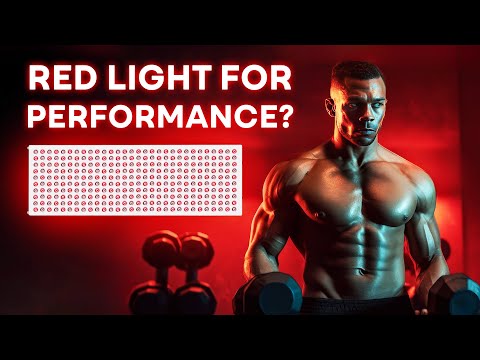
Can red light therapy improve your workout performance? We dig into the science behind red light for muscle recovery, endurance, and strength—and the findings might reshape how you use it. Discover what the latest studies actually show.
Use discount code ALEX and the following red light therapy for athletics devices:
✅ For a Mito Red MitoADAPT Min use this link: – A discount is automatically applied after you click the link
And before I take a deep dive into red light therapy for athletics, check out these resources on the topic:
✅ My epic Facebook group on red light therapy and more:
✅ My blog on using red light therapy for athletic performance: – This current video covers that topic
✅ Red light therapy dosing guide:
✅ My Mito Red MitoADAPT Min review:
✅ My red light therapy pulsing blog:
✅ The blue light therapy blog on my website:
✅ A cheatsheet on the effects of 810nm:
✅ Full playlist of my 2022 body panel red light therapy comparison series with all episodes: – check the summary towards the end if you’re short on time
✅ My excel sheet for comparing different panels to their competition:
✅ For my red light therapy buyer’s guide blog, follow this link:
✅ My red light testing methodology video:
Let me know what YOU think about my red light therapy for athletic performance video in the comments below!
✅ Overall conclusion: red light therapy before or after workout works. But, the perfect red light therapy for recovery or performance wavelengths include a diverse red and near-infrared combination. There may be a slight benefit using red light therapy 3-6 hours before a workout even and 10-60 Joules of a dose is best
#redlighttherapy #athlete #sports
00:00 Workout Performance Introduction
01:03 Key Study Takeaways
02:56 Best Wavelengths For Athletics
04:19 Optimal Dosing & Caveats
05:55 Optimal Session Timing
07:07 Final Conclusion
08:06 Best Panels For Athletics
09:08 Finishing Thoughts

Use discount code ALEX and the following red light therapy for athletics devices:
✅ For a Mito Red MitoADAPT Min use this link and code ALEX5: https://aferg.co/7d221
And before I take a deep dive into red light therapy for athletics, check out these resources on the topic:
✅ My epic Facebook group on red light therapy and more: https://aferg.co/fb-group
✅ My blog on using red light therapy for athletic performance: https://aferg.co/rlt-workout-performance – This current video covers that topic
✅ Red light therapy dosing guide: https://aferg.co/dosing
✅ My Mito Red MitoADAPT Min review: https://aferg.co/mito-adapt-min-review
✅ My red light therapy pulsing blog: https://aferg.co/pulsing
✅ The blue light therapy blog on my website: https://aferg.co/blue-light-therapy
✅ A cheatsheet on the effects of 810nm: https://aferg.co/810nm-blog
✅ Full playlist of my 2022 body panel red light therapy comparison series with all episodes: https://aferg.co/RLT-2021-playlist – check the summary towards the end if you’re short on time
✅ My excel sheet for comparing different panels to their competition: https://aferg.co/rlt-data
✅ For my red light therapy buyer’s guide blog, follow this link: https://aferg.co/RLTguide
✅ My red light testing methodology video: https://aferg.co/rlt-testing-method
Alex how do you hang it from sauna? I have same sauna and want to hang it like that as well.
I wonder about placing greater importance on the 810 nm wavelength due to the amount of research showing its effects, because there must be a reason for that particular wavelength to have been used by researchers, just like 850 and 660 are the dominant LEDs for commercial devices. Isn’t it simply because those LEDs are mass produced and easy to source? That’s why they are being used, and of course because they work. But what’s to say that 810 is more beneficial than 830 or 850? Is there a wealth of studies making that comparison? If researchers happen to use 810 a lot, maybe it’s because 810 is an easily sourced laser wavelength? Or maybe they all pile on to it because other labs have used it before and they can remove variables in the form of other wavelengths. It’s not like anyone has looked into the cell and discovered, “Ah! It’s adapted to this particular wavelength, let’s build LEDs and lasers to match!” If there are positive effects all the way from 800 to 950, then why fixate on 810 rather than 850? Yes, 810 is well studied, but do we really know it’s the best spot in the NIR spectrum?
what about core training?
How many joules do Planet Fitness stand up beds have?